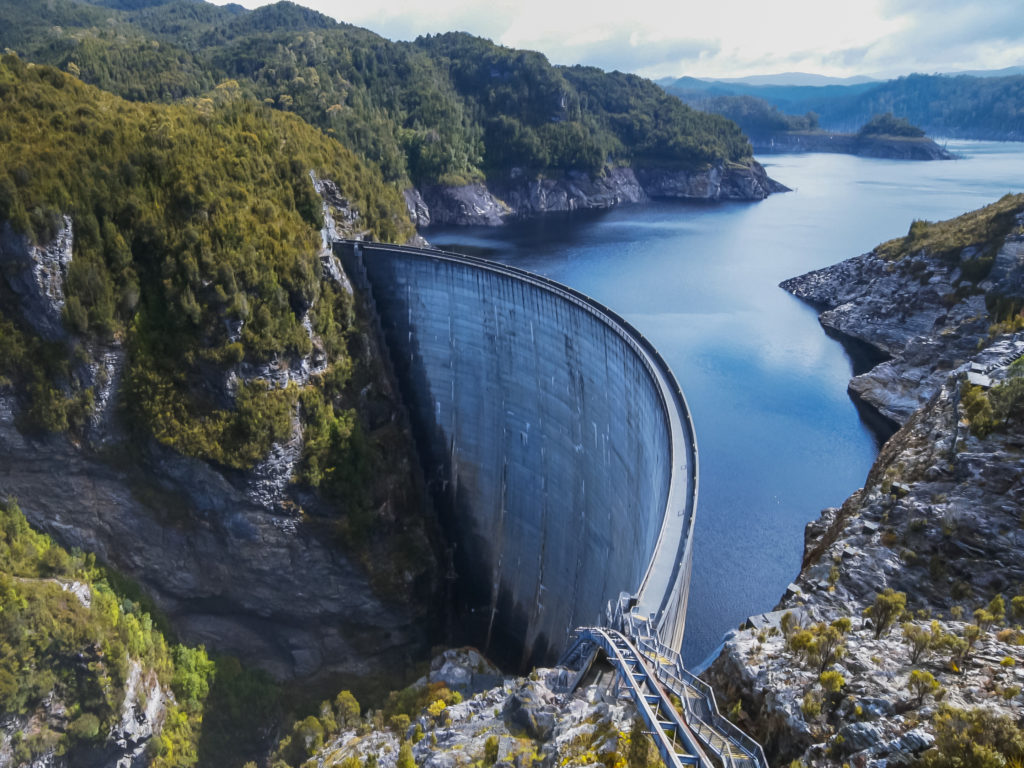Hydroelectric Energy: Advantages and Disadvantages
Photo by Borja PD
11 June 2024 – by Dhra Dhirakaosal Naglis
Humans have been using water to carry out work for them for thousands of years, enjoying the wide-ranging advantages of what would later become known as hydroelectric energy. The energy, also known as hydropower, played a pivotal role during the Industrial Revolution. During this time, river currents spun waterwheels that powered cotton and grain mills across continents.
How Does Hydroelectric Energy Work?
Hydroelectric energy works by using the force of moving water to generate electricity. It typically comprises a water storage reservoir, a dam and a plant to generate electricity from water. The water behind the dam spins a turbine, driving a generator to produce electricity.
A water turbine converts the kinetic energy of the moving water into mechanical energy, and then a generator converts it into electrical energy.
Pros and Cons of Hydroelectric Power
Like other renewable energy sources, there are many advantages and disadvantages of hydroelectric energy. Some prominent pros and cons are listed down.
Advantages of Hydroelectric Energy – Pros
1. Hydropower is Clean Energy
For starters, hydropower is clean and green. As it comes from water, a renewable source that naturally replenishes itself, it is fossil fuels-free. This means no greenhouse gas emissions come from the source.
2. Less Dependent on Seasonal Factors to Produce Hydropower
Hydroelectricity is less dependent on seasonal and weather factors than solar power and wind power, as large amounts of water can be stored in reservoirs ahead of time, creating a water bank. This also provides drought assistance, flood control, irrigation support and water for consumption.
3. More Control Over Energy Produced from Hydroelectric Power Plant
You can exercise more control over Hydroelectric plants, and hydropower energy production can be ramped up or down or even stopped and restarted to correspond to demand – making it flexible and secure. Low production costs also make it affordable.
4. Countries with Rivers and Rainfall
As energy generated through hydropower depends on the water cycle, countries with greater precipitation and rainfall, or those with greater access to rivers, have better electricity generation capacities.
Such is the case in Costa Rica. According to a 2022 report by the International Hydropower Association, almost all of the country’s energy came from renewable sources in 2021. Hydropower contributed to 74% of the energy mix. The country is home to the region’s largest hydropower plant and has a total installed capacity of 2,379 MW.
Meanwhile, globally, China contributed close to 60% of new hydropower production capacity in 2020. This was thanks to the country’s multiple large-scale projects.

Disadvantages of Hydroelectric Energy – Cons
1. Environmental Impact of Construction of Dams
Among the fluttering red flags is the construction of dams, which can result in damage to the surrounding environment and ecosystem. The process destroys habitats and obstructs the natural water flow, which impacts the movement and migration of aquatic animals and their breeding. This could potentially lead to the extinction of some species. Large-scale projects have also flooded vast areas.
2. Displacing Millions of People
Dams and reservoirs are also historically known for displacing tens of millions of people. Many of these people are from Indigenous and rural communities. India is the world’s third largest home to dams, with over 5,300 large dams in operation and hundreds of others under construction. These developments have left a trail of flattened and buried homes behind.
Anti-dam movements have increased in Southeast Asia as people demand more accountability and respect for human rights.
3. Astronomical Costs of Constructing a Hydro Power Plant
Astronomical up-front costs for constructing hydropower plants are also rising as economic sites become limited and costs related to labour and permits rise. The costs required to address environmental and social problems have also increased. Facilities will have to operate for many years before recouping back these costs.
4. Impact of Climate Change
Day-to-day weather patterns do not impact hydropower production as much, but climate change definitely does. This could affect the water cycle, leading to less precipitation and droughts. This can result in decreased energy generation.
Hydropower: A Divisive, Yet Important Renewable Energy Source
Due to its drawbacks, hydropower has been labelled as the “forgotten giant of clean electricity”. Existing hydropower plants will continue to play a key role in the world’s shift to renewable energy. However, upcoming hydropower projects, or those in development, face daunting challenges, from strictly adhering to regulations and widely approved sustainable standards to ensuring best practices and minimising sustainable risks. They must also maximise the surrounding communities’ environmental, social and economic benefits. Otherwise, hydroelectric energy risks creating new problems instead of solving old ones.







